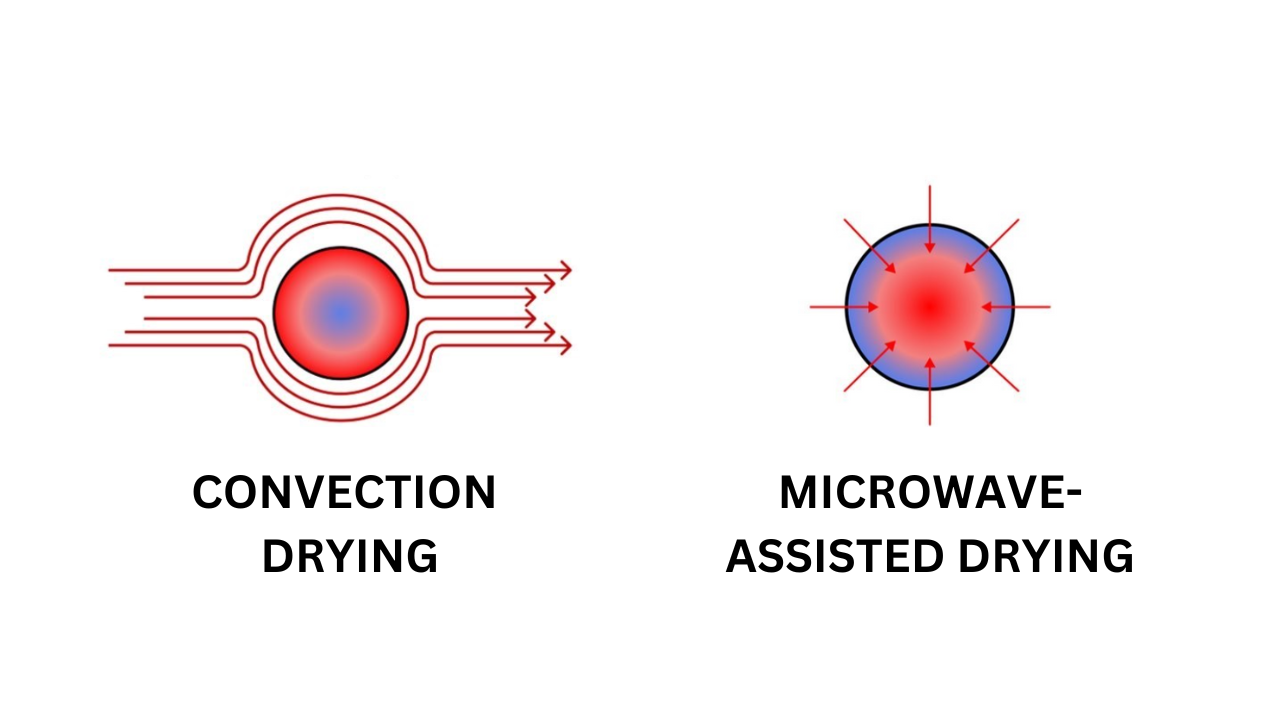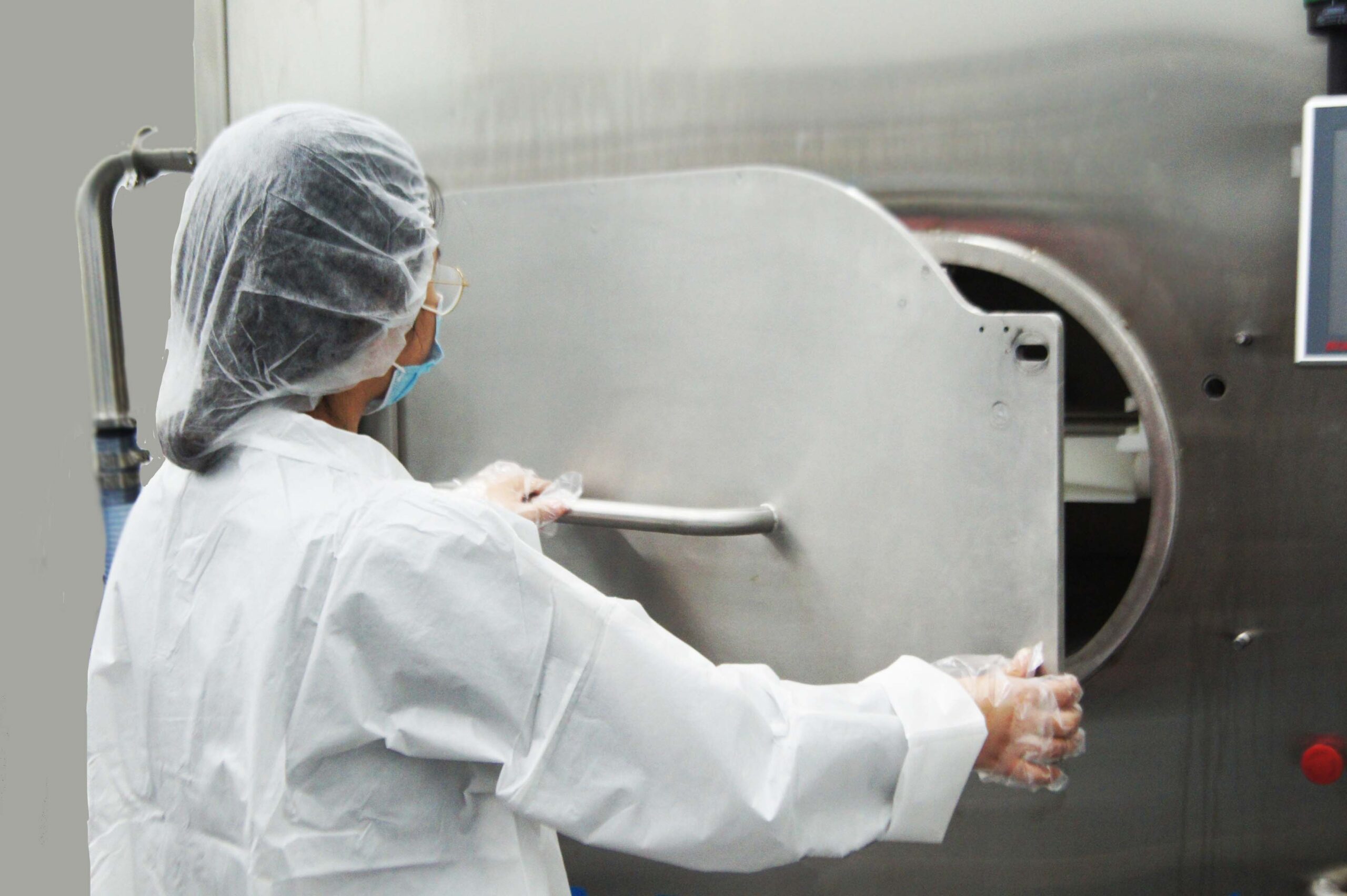BENEFITS OF MICROWAVE DRYING
CONVECTION DRYING AND VERSATILITY OF DIELECTRIC DRYING
When choosing a drying technique, it’s important to have a clear understanding of the methods available. From the process of making healthy snacks in your pantry to the foam of the chair you’re sitting on, drying is a key step during production. Finding the right drying technique that balances efficiency and cost, depends both on the material and the end goal. For instance, a material could be dried to increase product quality, reduce shipping weight, or stop mold and bacteria growth. To gain a better understanding of the differences between convection and microwave drying, let’s compare each drying technique, their operations, and possible end-product.
How DOES Convection and Microwave Drying work?
Microwave and convection drying both evaporate water, though their heating process differs. Microwave drying penetrates deep into the material using microwave energy, rapidly heating it throughout simultaneously (volumetric drying). Whereas convection drying circulates a heated medium (such as air) around a product, heating the surface of the material and slowly heating to the core (surface-to-core drying). Their different operational parameters and moisture removal process allows convection and microwave drying techniques to create different products.
Differing Drying Speeds Between Convection and Microwave Drying
Optimizing drying speed is essential in industrial processing to pinpoint potential future bottlenecks, estimate future expansion potential, and ensure optimal product quality. Industrial microwave drying typically has a shorter processing time compared to convection drying. This is because the rapid conversion of microwave energy to heat in the product quickly transfers moisture from the inside out. In contrast industrial convection drying, which relies on heated air for surface-to-core drying, is much slower as it must first heat the surface before the core can begin to heat.
By adjusting the microwave energy being applied, industrial microwave drying can rapidly adjust to changing material moisture for a faster drying process, improving overall efficiency. While industrial convection drying is unable to react quickly to changing moisture levels, which can lead to delays and congestion in production.
In addition, drying time can influence product quality. Quick-drying processes, like microwave drying, can preserve product quality because exposure to high temperatures is relatively short. Slow high-temperature processes, like convection drying, can degrade the material due to prolonged exposure to heat.
Applications of Convection and Microwave Drying
Not all drying techniques result in the same end product. Individual drying techniques often preserve different characteristics of product quality, like appearance, colors, nutrients, and textures. It’s important to choose a drying technique based on the end product goal, consumer satisfaction, and desired market.
The lengthy exposure of hot air during convection drying can promote oxidation reactions, heat damage, and case-hardening in the material. Microwave drying techniques avoids these issues by providing efficient and fast drying, which preserves both the visual appearance and product quality.
Drying System Footprint & Components
Industrial convection drying generally requires long drying chambers to balance heating the product evenly without burning, and adequate time for water evaporation. In addition to the chamber, it requires an external heat source (like gas burners, electric elements, or steam), and air handling systems for infeed and exhaust air (which scale with chamber size). Microwaves’ highly efficient energy transfer allows for a smaller chamber size and overall dryer dimensions. As a result, microwave systems require minimal air handling and a generator to produce electromagnetic waves for drying.
ENERGY EFFICIENCY Considerations
Microwave drying uses energy more efficiently than convection drying. This is because microwaves selectively interact with polar molecules in the material, like water, to generate heat. This selective process increases internal vapor pressure without wasting energy heating the entire material. In contrast, convection drying heats from the outside inwards and requires hot air or steam. As a result, there is often significant energy wastage as not all heat generated for drying is transferred to the product. This wasted energy (heat) is either transferred to the metal in the chamber or exits the system with the exhaust air.
Drying Production Flexibility For Convection and Microwave
Convection and microwave drying operations can include multiple drying stages for production flexibility. Each of these stages can have different processing conditions, tailored and optimized based on the phase of moisture removal. Since microwaves can be instantly turned on or off, energy can be instantly applied to or removed from the products to prevent burning. Alternatively, convection drying cannot quickly change or remove the applied energy (heat).
CONCLUSION: AN Overview of Convection and Microwave Drying
Both drying techniques have clear benefits and can each be optimized for different applications. Convection drying is often a slower process, which can negatively impact product quality. This makes convection drying great for applications that benefit from long processing time or low energy efficiency. While microwave drying is a more efficient and quicker process, minimizing the impact of drying on the quality of the product. This makes microwave drying ideal for heat-sensitive products and situations where energy efficiency is important. Ultimately, the choice between the two often depends on operational requirements, business goals, and the nature of the product.
CONTACT A MICROWAVE DRYING EXPERT
Unsure about which method is best to dry your material? Contact us to explore how microwave processing can benefit your production process and product quality.


